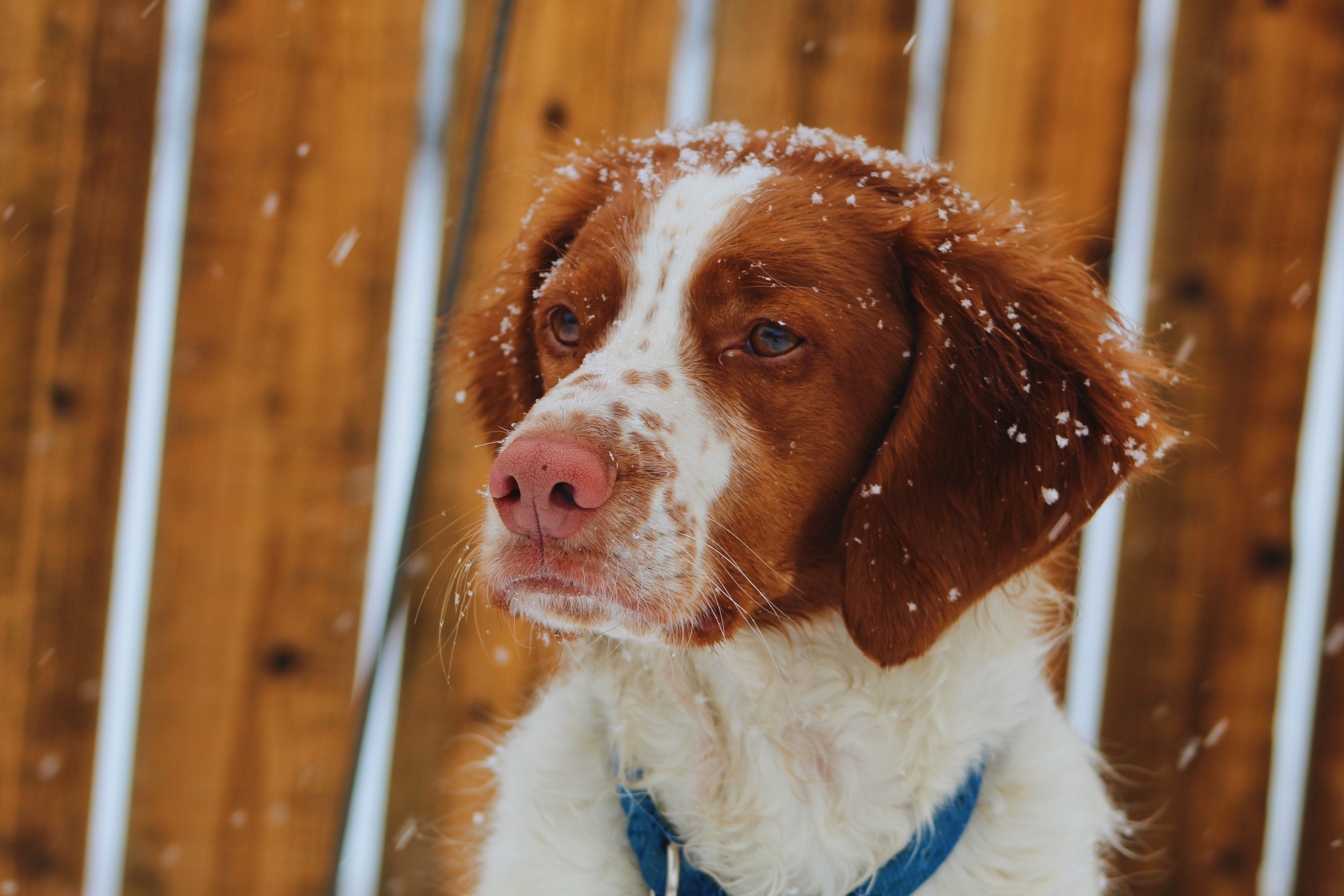22nd February marks National Walking the Dog Day – a day dedicated solely to celebrating the quality time spent walking our four-legged friends. Whether it’s part of your daily exercise routine or a reason to get some fresh air, walking greatly benefits your mental and physical health, while allowing our pets to get moving and exert some of their seemingly boundless energy.
On any normal day, there’s an element of preparation that goes into walking your dog, and especially upon the arrival of cold winter months. For those looking for advice on how best to tackle the temperature drop for you and your pup, check out our top tips on how to safely enjoy your winter walkies.

- Wrap up warm
Checking the weather forecast is an essential part of any winter outing, even more so when your plans include a furry friend. Being aware of roughly how cold it’s going to be on your walk will help you better prepare for the adventure. For owners, it means knowing how many layers to wear, how long you should be outside, and how to appropriately dress your pet. Keep in mind that some dogs with less fur might need to wear a coat, and smaller dogs or those with sensitive paws may benefit from some boots (yep, you read that correctly!).
Going for walks at the warmest time of day, around midday, may also help keep your pup comfortable in the cold. And, as we experience shorter days and longer evenings, it’s important to make sure your dog is clearly seen outside – why not invest in reflective clothing or an LED collar to help boost visibility and keep your dog safe?

- Keep stimulated
It’s important to switch things up now and then to make the most of your walk. Whether that’s bringing a friend along or choosing a new route, making a change brings new levels of excitement to the daily dog walk and keeps both you and your pup mentally active.
What's more, make sure you’re aware of any potential dangers along the walk, like frozen ponds and streams, and keep an eye out for any uneven ground that could potentially trip you up.

- Stay safe
If you find yourself frequently crossing frozen ground or walking over grit salt, why not buy some paw wax or balm to help protect your pet’s paw pads? Additionally, take extra care to clean any wounds thoroughly, as healing may take longer if skin is dry or dehydrated, plus there’s a higher risk of infection.

In the unfortunate event that your pooch strays out of sight, it’s important to make sure all microchip details are correct, so they can easily find their way back to you. And preferably, walk your dog on a lead to make sure they don’t run off and find themselves stuck or lost anywhere they shouldn’t be.

As much as you need to keep your pup safe, it’s important to keep yourself safe too. There are apps available for your phone which track your location and allow you to share it with a friend, or otherwise, you could let a loved one know when and where you’re going out so they know your whereabouts (and are prepared in case of an emergency). Check out apps like WalkSafe and Hollie Guard, and use what3words to identify your precise location at all times.
- Check up on your pup
It’s important to keep checking in with your furry friend. If your pet has had enough, they will tell you, so it’s important to look for signs they’re uncomfortable. Look out for whimpering, shivering, pawing and licking, and keep checking that their paws aren’t too muddy or wet. If low temperatures become a concern, keep walks short and sweet, and where possible, for larger dogs, go out twice a day for two shorter trips instead of one long walk, to limit time spent outside over a short period.

Making sure both you and your pet have had enough to drink is very important. Take a bottle of water to ensure you stay hydrated on your walk and make sure your Dog Fountain is ready for your return to keep your canine companion refreshed throughout the day.

- Clean up
Colder months are the ideal time to take a little more time to pamper your pooch. To clean grubby paws, use our Pet Wipes to gently remove any muck, and for bigger, messier jobs, run a warm bath and give your pup a wash with some dog-safe shampoo. Wrap them up in a towel afterwards to make sure they’re completely dry – it’s the best excuse to get some extra cuddles too!

- Take a break
Remember – don’t feel guilty about having to miss one of your daily walks if you’re feeling particularly tired or run-down. It’s important to take the time to rest, for both you and your pooch, so instead try taking your pup along to run brief errands and get you both outside.

You could even borrow some tips from owners who don’t walk their dog every day and instead, get creative with your fitness activities. Some of our favourites include:
- Yoga (or ‘doga’) – An ideal indoor exercise, yoga includes poses that can be modified to let your pup join in on the fun – not to mention, the downward dog, of course…
- Swimming – Perfect for those with a dog-friendly local pool (or favourite wild swimming spot in the summer).
- Fetch – A quick game of fetch will get heart rates pumping, and it means you don’t have to be outside for long periods of time.
- Agility training – A great way to get the whole family involved and take advantage of any indoor spaces, set up an obstacle course to get your dog moving. You never know – they could be the next Crufts winner!
So how cold is too cold? Data from Tufts Animal Condition and Care says that small and medium breeds shouldn’t venture outside when it’s colder than -4°C, but bigger dogs could tolerate slightly cooler temperatures around -9°C. According to the MET office, 2021 saw the lowest UK temperature recorded since 1995 at -23°C, so it’s important to stay up to date with weather forecasts to protect you and your pooch.
If you’re ever in doubt about pet safety in the winter months, talk to your vet about any concerns. Remember, comfort and safety is important, but make sure you’re having fun too. Your vet can offer advice and support to help you achieve it all.

